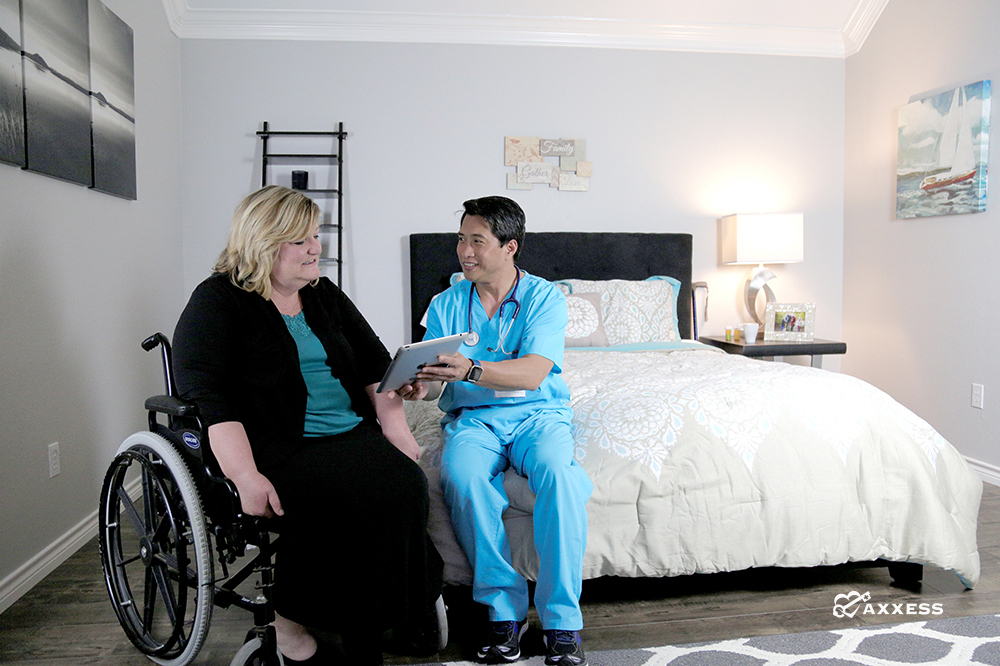Updates to the Home Health Conditions of Participation (HH CoPs) include frequent references to patient-centered, individualized care using an interdisciplinary team approach. Clinicians will be tasked with performing patient-focused comprehensive assessments, creating individualized plans of care with measurable goals and coordinating patient care with the physician and other disciplines involved to ensure individualized outcomes. Under the new guidelines, “cookie cutter” plans of care will no longer be compliant.
The Centers for Medicare and Medicaid Services (CMS) states in previous publications, such as the OASIS C2 Guidance Manual,that the assessing clinician is expected to understand the patient’s overall condition. This expectation is re-emphasized in the most recent HH CoPs updates.
According to §484.55 of the updated HH CoPs, “each patient must receive, and a home health agency (HHA) must provide, a patient-specific, comprehensive assessment. For Medicare beneficiaries, the HHA must verify the patient’s eligibility for the Medicare home health benefit including homebound status, both at the time of the initial assessment visit and at the time of the comprehensive assessment.” This has not changed from current regulation; however, it has changed location from Subpart C, Furnishing of Services, to Subpart B, Patient Care. Likewise, there are no changes as to which disciplines can conduct the initial assessment visit or the comprehensive assessment visits.
As you may recall, the initial assessment visit must be held within 48 hours of the referral or of the patient’s return home, unless the physician has ordered a specific start-of-care (SOC) date. If a specific SOC date is ordered by the physician, the initial assessment must occur on the ordered date.
In the HH CoP Final Rule comments, CMS states if the home health agency is unable to begin care on the physician-ordered SOC date, CMS expects the HHA to decline the referral, because it is unable to meet the patient’s needs in a timely manner. CMS further explains “it is not acceptable for the home health agency to seek a new referral with a new start of care date that is more convenient for the agency.” Simply writing orders for a new SOC date will not make you compliant with the HH CoPs regulation.
In addition to the initial assessment, the comprehensive assessment must be conducted and include:
- Patient health, psychosocial, functional and cognitivestatus;
- Patient strengths, goals and care preferences, including information that may be used to demonstrate progress toward achievement of goals identified by the patient and measurable outcomes identified by the HHA;
- Patient continuing need for home care;
- Patient medical, nursing, rehabilitative, social and discharge planning needs;
- Review of all current medications, in order to identify potentially adverse effects and drug reactions, including ineffective drug therapy, significant side effects and drug interactions, duplicative drug therapy and non-compliance with drug therapy;
- Patient primary caregiver(s), if any, and other available support, including their willingness and ability to provide care, availability and schedules;
- Patient representative (if any);
- Current version of Outcomes Assessment Information Set (OASIS);
- Beneficiary’s eligibility for the Medicare Home Health benefit, including homebound status.
Need To Include Broader Factors In Assessments
The assessing professional must evaluate a patient’s mental health, social status and functional capacity within the community by looking at issues surrounding the patient’s social and psychological condition. For example, a patient’s education and marital status would need to be assessed to screen for potential issues that may complicate or interfere with delivery of services and a patient’s ability to care for themselves.
Cognitive status refers to evaluation of the degree of a patient’s ability to understand, remember and participate in developing and implementing a plan of care, which is different from the cognitive status OASIS M items. Numerous tools are used to screen a patient’s cognitive status. CMS does not mandate the use of any specific tool and leaves this up to the discretion of the HHA. I particularly prefer the CLOX Test as a screening tool. However, each HHA should select the tool(s) to administer based on the population it serves.
The new HH CoPs regulation also includes assessment of a patient’s strengths, goals and care preferences. Strengths may be a patient’s knowledge of medications, or motivation and readiness for change. Examples of patient care preferences include desiring a shower rather than tub bath and this information should be gathered and accommodated as much as possible.
This information is important for care planning, such as creating a timed voiding toileting schedule for management of incontinence or following a turning schedule for managing an immobile patient who is at risk for developing pressure ulcers. The goal of cumulative comprehensive assessment requirements is to enable the HHA to develop a truly patient-centered, complete plan of care by understanding the patient and his or her needs and goals in depth.
Updates to the HH CoPs tasks HHAs and assessing professionals with performing a thorough assessment to identify a patient’s needs, goals, strengths and deficits and how they may impact the outcomes desired by the patient and HHA. The resulting plan of care will need to be specific and serve as a roadmap to the best outcomes for the patient. HHAs will need to in-service staff members, whether directly employed or contracted, on these new regulations and the expectation that assessing professionals be compliant when the new regulations are implemented, as determined by CMS. This education should be documented for evidence to the surveyor.

